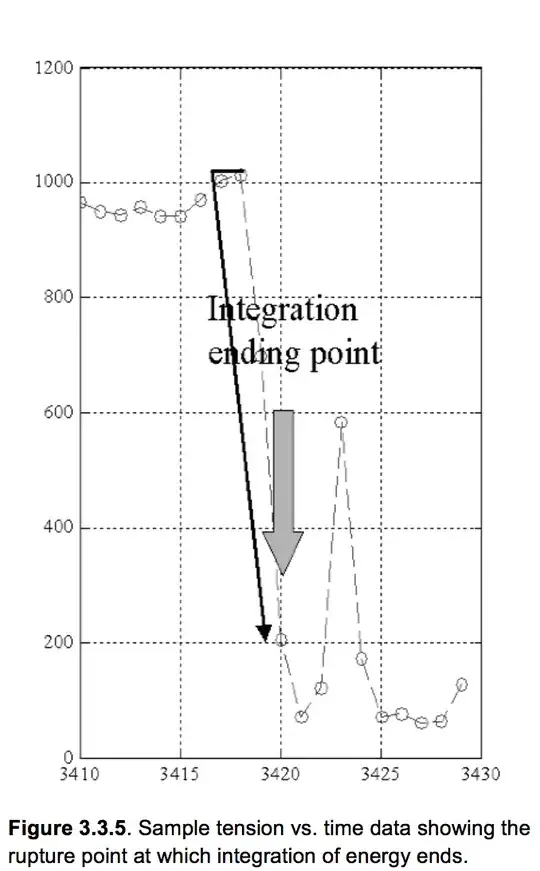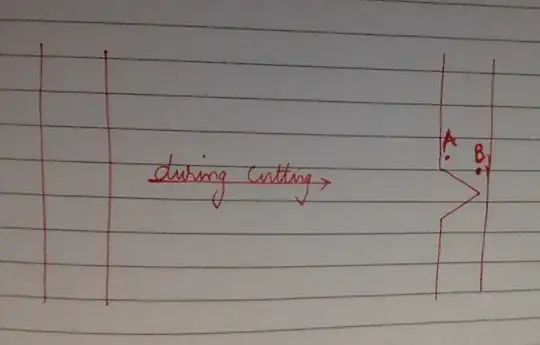Let's suppose for simplicity that the cut happens instantaneously and that the rope remains straight after it is cut.
The magnitude of the tension felt by the mass is initially $mg$, since it has to balance the force due to gravity. If the rope is cut at time $0$, the information that the rupture has happened will start to travel towards the mass at velocity $v_s$, where $v_s$ is the speed of sound (longitudinal wave) in the material the rope is made of, and will reach the mass at time $t(y)=y/v_s$, where $y$ is the distance from the cut.
As a reference, the speed of a sound in nylon is $1070$ m/s according to this page. Therefore if $y=1$ m the mass will "notice" that the rupture has happened at time
$$t(1 \text{m}) = \frac{1}{1070} \text{s} \approx 10^{-3} s$$
So, from the point of view of a human, the rupture will happen almost immediately.
In this ideal case, the tension will drop instantaneously from $mg$ to $0$ at time $t(y)$. In a real case, however, the drop will happen in a finite time.
Take also a look at this plot of tension vs time during the rupture of a climbing rope, taken from this document from UIAA:

(On the $y$ axis the unit is $10 \cdot$ N, don't know about the horizontal axis but I'm guessing $10^{-3}$ s...these people should really learn to label their axes though!)

